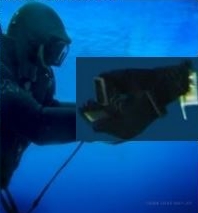Posted on 04/17/2018 1:45:49 PM PDT by T-Bird45
PHILADELPHIA — A Southwest Airlines jet apparently blew an engine at about 30,000 feet and got hit by shrapnel that smashed a window and damaged the fuselage Tuesday, killing a passenger and injuring seven others, authorities said.
The plane, a twin-engine Boeing 737 bound from New York to Dallas with 149 people aboard, made an emergency landing in Philadelphia just before noon as passengers breathing through oxygen masks that dropped from the ceiling said their prayers and braced for impact.
"I just remember holding my husband's hand, and we just prayed and prayed and prayed," said passenger Amanda Bourman, of New York. "And the thoughts that were going through my head of course were about my daughters, just wanting to see them again and give them a big hug so they wouldn't grow up without parents."
(Excerpt) Read more at msn.com ...
> “The pilots did a helluva job setting it down”
The crew and the passengers are so lucky to be alive.
...but I thought Mythbusters assured us that such thing could never happen.
Irrespective of how poorly the manufacturer-sent engine was admitted to have been maintained--and we can probably agree they were (knowingly?) misconstruing the MORE guidelines/requirements, the fact will remain that the engine that went into the water attached to the CGC wasn't the engine that was sent to that manufacturer. (They had big budget gubmint schemers planning this one.)
Somehow the twice-sued, multiple-failure-admitting commuter airline now has 4x the space on expensive airport land and many more approved routes, too. How does that happen?
(old above, new below)

Even though it took more than dozens of people to pull off the plane-load of hood-winking falsehoods, not everyone had a "need to know" how involved the big picture was. Several may have thought they were simply doing their patriotic duty in a training exercise, for which there was plenty of taxpayer money to go around, even to this day.
But when this misappropriated piece of highly classified US military hardware


I've got a retired NTSB IIC, several senior FAA guys and other life-time aviation professionals say there's no valid reason to reject my claims. Deal with the facts and stop trying to throw around inuendo, like your use of that tar-baby, "conspiracy."
Exactly so.
I was on a TWA L-1011 that had an aborted take off. Very disturbing story. Both airplane and airline are now defunct.
My first flight ever was on a TWA Constellation in the fifties. A decade later, I was on a Braniff DC-3 seated near the wing. Looking out the window of the prop-job, I could see the wings flapping up and down in flight. Kind of spooky...
My first flight was in 1955-——delightful experience——I DETEST flying now.
.
Yeah, I’ve flown my last, with no regret.
“air taxi/commuter” versus “air carrier”
...
Those are official terms used by the government. Articles on today’s accident aren’t using those terms but that’s obviously what they mean.
Other than that you’re full of nuts.
Fan blades break...it used to happen occasionally. UAL 232 (Sioux City) was a fan blade disintegration that severed the hydraulics lines in the tail. Remember the old B-727s that had the engines side by side at the tail? Everybody wanted to sit in those rear seats for the leg room...they were the most dangerous seats on that plane, with your head right next to an engine.
I’m like minded.
However, take a look at this beautiful bird. Enjoy.
https://www.youtube.com/results?search_query=fastest+take+off+757
They have cast iron Hillary’s in them?
The wrong engine failed, and the other one was left.
That’s a short takeoff alright. I see they were in Santa Cruz. Last time I took off from nearby San Jose, the flight path was a corkscrew around San Jose until they reached enough altitude to pop over the mountains. The pilot was very entertaining as we flew in circles. LOL
Peebles, Ohio -- GE Aviation’s boot camp for new jet engines—has seen the GE9X, which is destined to power Boeing’s next-generation 777X passenger aircraft, undergoing tests during the past few months.
The engine’s components have been under analysis for much longer than just this summer, however. Testing of GE9X components began six years ago, including evaluation of the fourth-generation carbon-fiber fan blades and fan case, 3D-printed fuel nozzles and its special new lightweight materials, known as ceramic matrix composites.
Over the decades, hollow titanium fan-blade technology has served engine-maker Rolls well, from the RB211 to the Trent family of engines. Now Rolls is examining the possibilities of producing a carbon-titanium family of fan blades, a technology still in the development phase.
On modern high-bypass-ratio engines, most of the air passes around the outside of the core, which means most of the thrust is generated by the fan, not the core. Typically, the bypass ratio on today’s modern engines is at least 10:1. “That means 10 times as much air goes through the fan and straight around the outside of the core through the bypass duct, as opposed to the core.
Rival GE, meanwhile, continues to rely on carbon-fiber composite fan blades, which it introduced on the GE90 engine in 1995. Today, large fan blades are manufactured at GE using a carbon-fiber tape-layer process, in which engineers layer strips of tape to make up the shape of the blade. Meanwhile, for the CFM56 and Leap engines, GE partner Safran has been developing a 3D woven technology in conjunction with Albany Composites. Engineers pump resin into, and consolidate, a 3D carbon-fiber shape.
Carbon fiber is used for the blades because of its light weight. But whereas it is easier to shape thin titanium blades for aerodynamic performance, composites tend to have thicker cross sections. “With titanium, you can make thinner blades, which means the aerodynamics are slightly better. You have to lay down many layers of composites to form a fan blade, and it is quite challenging to form aerodynamically efficient complex 3D shapes with sharp curves using composites,”
to help with the bird-impact problem, manufacturers are migrating toward what might be described as a carbon-fiber composite-metal hybrid. Carbon-fiber composite fan blades tend to feature thin titanium edges, which give them the impact-resistance required for a bird-strike. Birds are not the only threat from the environment. “On composite blades, you need a metallic edge to protect the carbon-fiber composite, to deal not just with bird strikes but also erosion from the dust that is in the air, rain, snow and hail,” says Weeks. These factors “predominantly affect the leading edges of the blades, particularly toward the tips, which are the fastest moving parts of the blades,”

I had to look it up, but there are about 7,000 lbs of fuel in each wing in a 737. There is more fuel in fuselage tanks.
7000 lbs per wing equals about 3175 liters or 838 gallons stored in each wing for a 737, which is about 1,680 gallons.
http://simviation.com/rinfo737.htm
But this site here says that the 737 holds 6,875 gallons or 26,025 liters of fuel max. cap.
That means each wing is weighted down by 23,000 pounds at takeoff, not 7,000 pounds. (in jet fuel gallons to pounds). And again, the specs on a A380 AirBus for fuel are 320,000 liters, which in water (not fuel weight) equals 705,500 lbs in water weight.
(Others calculated in excess of half a million pounds of fuel.)
Where did you get your specs on the 737? It holds over 3400 gallons in each wing, not just 838 gallons that you stated...
Anyway, thanks for the info. It's a LOT Of jet fuel.
Disclaimer: Opinions posted on Free Republic are those of the individual posters and do not necessarily represent the opinion of Free Republic or its management. All materials posted herein are protected by copyright law and the exemption for fair use of copyrighted works.